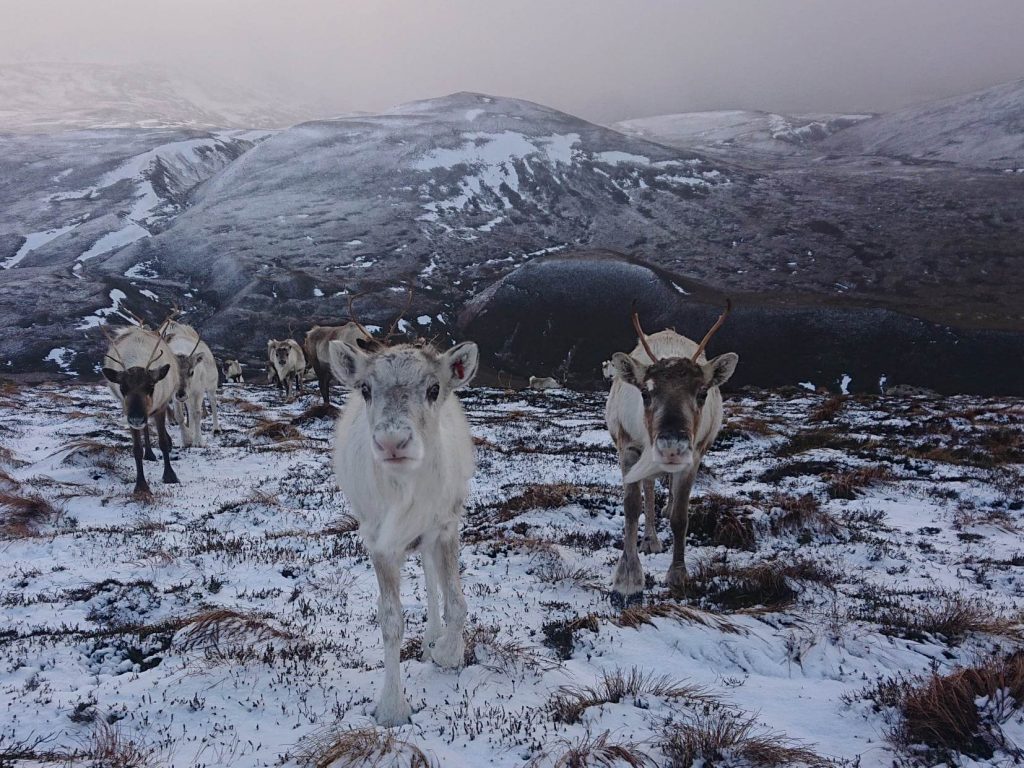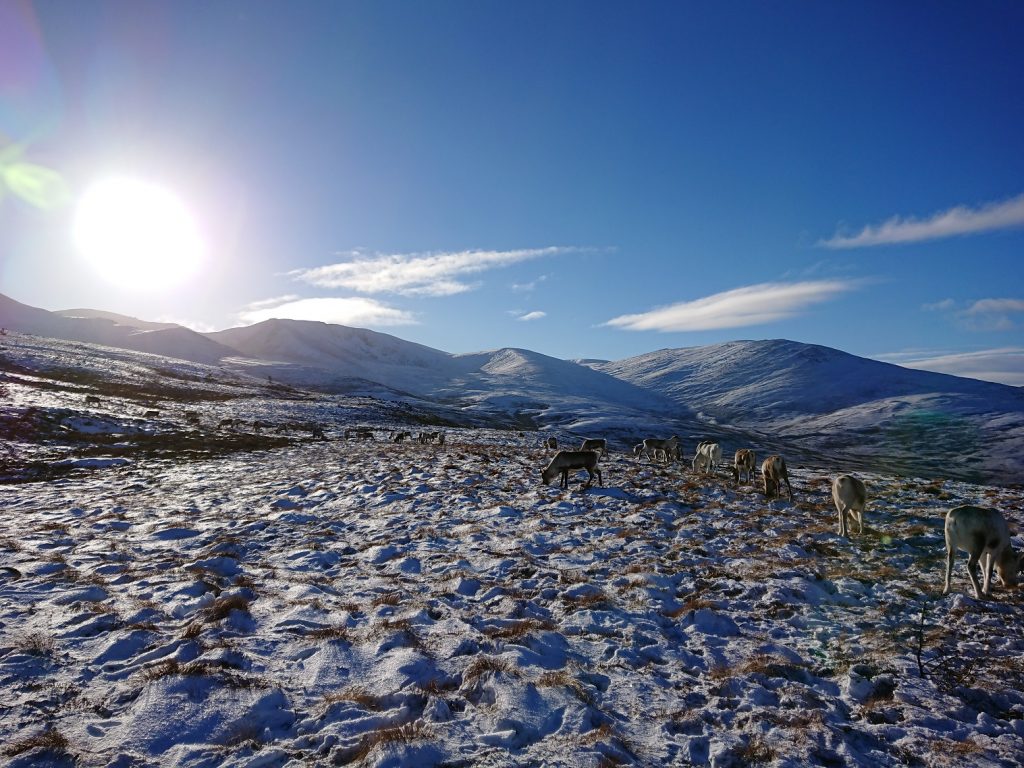This is the second installment of Emm’s fantastic blog. Read part one by clicking HERE.

The Breeding Season
Whilst I was there, there were 2 bulls with their girls in the hill enclosure separated in different areas. One group was Sherlock and his girls over on Silver Mount. He was laid back. Then the other group was Morse and his girls. Morse was a bit more aggressive and would pace the fence grunting. He was very protective of his girls.

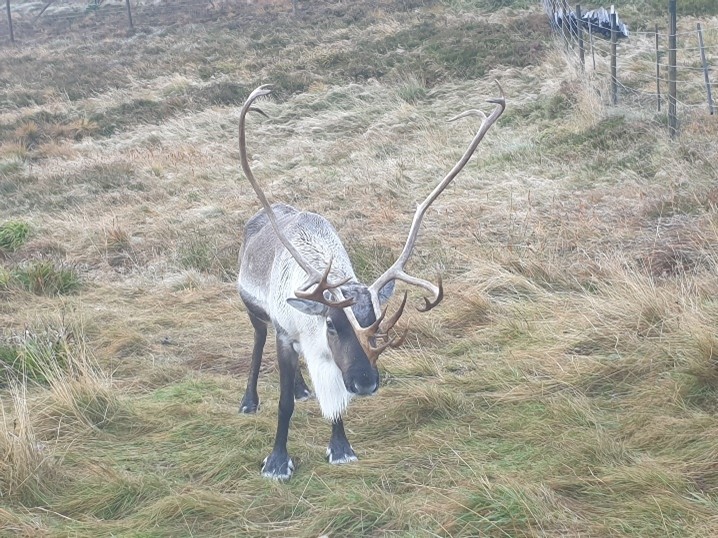
Chilling With Reindeer
Fiona, Joe and Andi went to Sherlock and his girls over on Silver Mount, the big hill in the hill enclosure, to check temperatures and do some vaccinations. Lotti and I moved Morse and his girls to a different part of the hill enclosure. We separated him with a few of his girls into a separate pen area so we were safe. Reindeer bulls with their girls can be very aggressive and can charge at you. We had moved them so we could give them vaccinations. Mushy was being chased around by some of the reindeer but it is not good to have them running around before a vaccination so I helped Lotti separate Mushy and Pinto off together into their own area. Suddenly, a mountain hare ran out of the shed and stopped in the middle of the reindeer. It was about 2 metres away from me. It was so exciting. The mountain hare and the reindeer stared at each other for a few seconds then the reindeer charged at it and then it ran away. What a lovely experience. Lotti and I then had to wait for Andi, Fiona and Joe. Whilst we waited, we chilled with the reindeer. I got to spend some quality time with my adopted reindeer called Scully. It was so nice and special spending quality time with her. I hadn’t been able to see her much as she had been in with Morse. Some of Morse’s girls had calves with them and I hadn’t got to know these calves yet so I was able to get to know them whilst Morse was separated. When Fiona, Joe and Andi got to us, some of Morse’s girls got vaccinations. Andi and I put Morse’s and his girls’ breakfast down in their usual part of the hill enclosure and then Morse and his girls were let back out to have their breakfast.
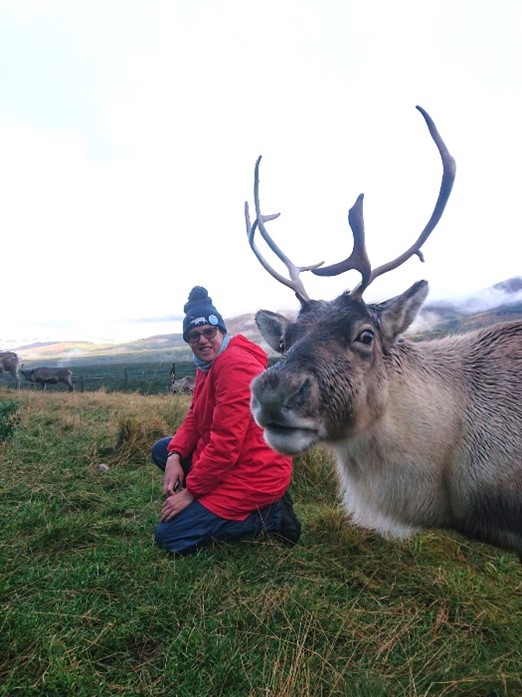
Walking Calves and Reindeer Around Glenmore
To get the calves used to being handled and having head collars on, we take them away from their mums in the hill enclosure for a few days and keep them down in the Paddocks. We take about 2 calves at a time. In the mornings before the Reindeer Centre opens, we take some of the Paddock adult reindeer and the calves out on a walk around Glenmore. We sandwich the calves between the adult reindeer. The adult reindeer are the role models for the calves. One morning, I walked Dr Seuss, Bond and the 2 calves Popsicle and Vanilla to the Pine Martin Bar and back with Hen and Amy. I led Bond. On another morning with Mel and Lisette we walked Athens, Clouseau, Frost, Dr Seuss and the calf called Zoom. This time I led Dr Seuss and Frost.
Reindeer Centre and Office Jobs
There were always lots of jobs to do at the Reindeer Centre. On some afternoons, I poo picked the woods where the Paddock reindeer go at night. If reindeer have been changed in the Paddocks, I switched the reindeer ID cards over in the exhibition so visitors would know who was who. I checked the adopters gift packs to make sure everything was there, tidied and restocked the shop. The magnets and glass reindeer were very popular. Some afternoons, I tidied the exhibition and antler making area and wiped down the surfaces. I put strawboard in the adopters envelopes to protect the adoption gift packs. For the October Newsletter, they put a photo of the reindeer in with the newsletter with a sticky label on the back giving update of what the reindeer have been up to so I stuck the sticky labels onto the back of the photos.
I also talked to visitors in the Paddocks and answered their questions. One afternoon I was talking to a visitor and a child ran to get me as Popsicle the calf had got her antler in a wire mesh bit of the fence. I untangled Popsicle’s antler and she was ok.
Reindeer Off to the Free-range
With Lotti and Cameron we led 5 older girls from the top corridor in the hill enclosure back on to the free range. This was the time of year that the reindeer would be moved to the free-range for the winter. The reindeer were Dixie, Lulu, Fly, Wapiti and Pavlova. Lotti put spot on (protecting from ticks) on to Fly. The other 4 reindeer had already had it. Lotti took a photo of Wapiti for their adoption photo and Dixie came and ate out of the hand feed bag I was holding. When we let them go it was so lovely seeing them go out onto the free-range.

Splitting Calves from their Mums
One morning I helped to move some of the calves around between the Paddocks and hill. First, we took Frost, Clouseau , Sunny and Zoom out of the paddocks and took them up into the hill enclosure and I led Clouseau and Zoom on this occasion. The 2 calves we wanted to take back down were with their mums and the bull Morse so we had to split Morse and his girls first to get the 2 calves and their mums. The 2 calves were Popsicle and Vanilla. Popsicle’s mum is Caterpillar and Vanilla’s mum is Ochil. After we managed to get them we put Morse and the rest of his girls back into their part of the hill enclosure. We took Caterpillar and her calf Popsicle, Ochil and her calf Vanilla, as well a 2 other reindeer Bond and Olmec off the hill. When we got to Brenda we loaded Bond, Olmec and the 2 calves into Brenda whilst Andi took the calves’ mums back up the hill to Morse. We then took the reindeer to the Paddocks at the Centre. In the Paddocks, Popsicle and Vanilla grunted for their mums for a bit as it was the first time they had been away from their mums. They would see their mums in a few days time after getting used to be handled and walked on a head collar.
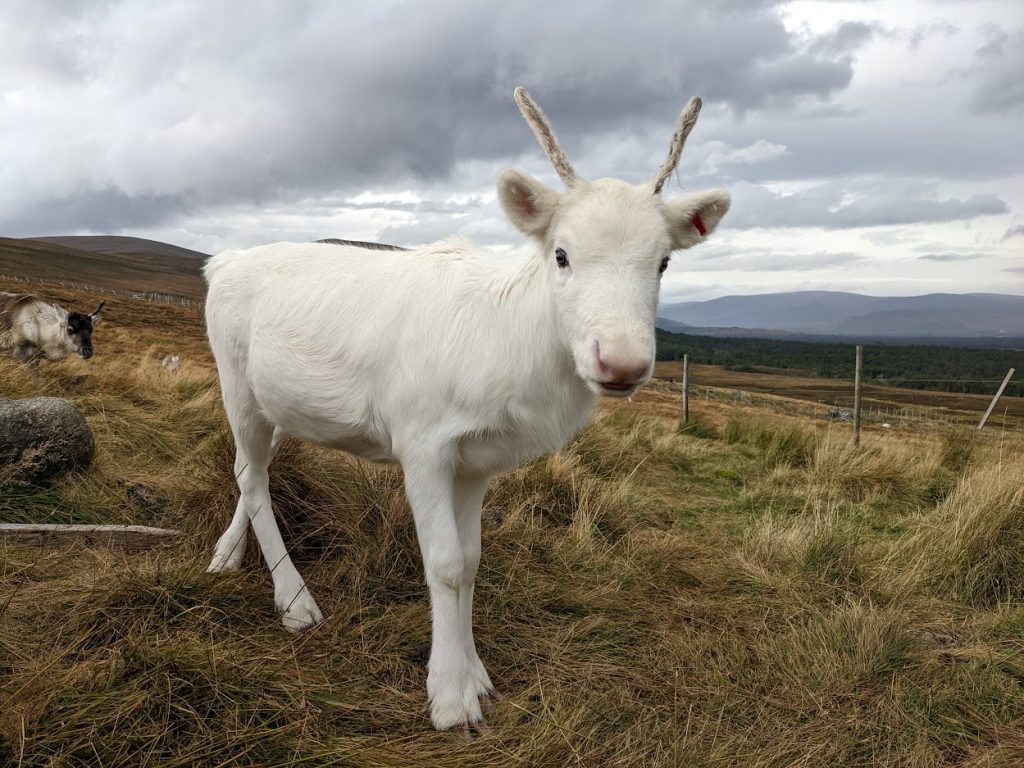
Hill Trips
On the Hill Trips, I often would escort the back of the line of people whilst we walked to the hill enclosure and reindeer. I would sometimes put some food out for the reindeer and then count them to make sure all the reindeer were there. I would sometimes give Sunny his milk.

I sometimes did the hand feed talk to the group of visitors so they knew what to do in hand feeding and what to expect. I gave out the hand feed so they could hand feed the reindeer. I talked to people and answered their questions. I sometimes took photos of visitors if they wanted photos taken with the reindeer.
This all gives you an idea of the many things that I do when volunteering with the reindeer and herders. It is such a special place and I love my time no matter how busy I am. I am really looking forward to my next trip.

Emm












